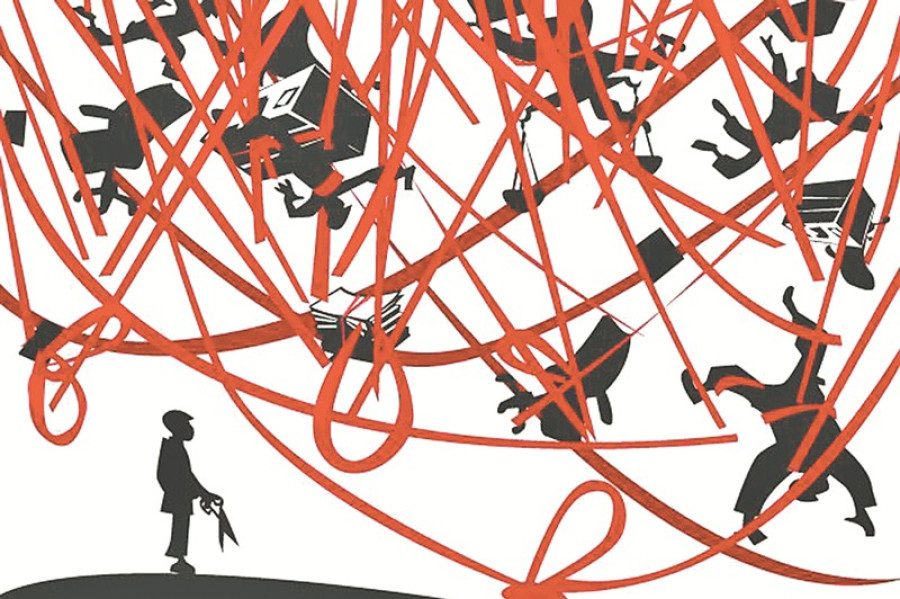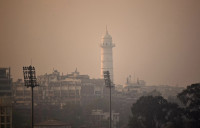Opinion
Complex challenges ahead
The hope is that Nepal gets a truly nationalist government that can lay the foundation of its progress
Avinash Gupta
After months of speculations amid endless ‘agreements’ between the coalition partners, Nepal has seen yet another government change. The average term of a government appears to be shortening. While this is not in itself an appropriate measure of stability, it appears that the lust for power motivated by avarice drives Nepal’s political economy. While one may argue that this is the ‘beauty’ of a ‘democratic’ nation, undeniable is the fact that for decades now, we have seen a kind of musical chair—almost among the same faces no matter how unaccountable—going on without any tangible improvement in the living standards of an average citizen. Nepal continues to languish as a least developed country comparable to many near-failed states in sub-Saharan Africa.
A faction in our extremely divided society believes that the outgoing prime minister was able to ward off Indian interference and assert Nepal’s sovereignty. Indeed, the prime minister took office when our constitution had recently been promulgated. It was approved by an ‘overwhelming majority’ of the Constituent Assembly (CA) members, but it was not thought of as all-encompassing, just and broad-based by a large section of the population, mostly in the southern plains. Scores of protestors had died due to the disproportionate use of force by the security apparatus. A few reports have also suggested that some protestors were armed with sharp weapons.
The Madhes issue
Oli took office when there was a major trade disruption that obstructed the supply of essential goods such as fuel and medicines. The trade disruption, according to the World Bank’s update on Nepal, severely impacted our industrial activity, collection of government revenues and even public expenditure. At the peak of the disruption, fuel supplies were reduced by nearly 90 percent. The impact was such that the growth rate of the country’s Gross Domestic Product (GDP) was one of the lowest in over two decades. So what did the outgoing prime minister and his cabinet do? Diversifying trade to reduce dependence on India was one of the strategies Oli adopted, but given the quality of infrastructure on the Nepali side, this option, at least in the short-term, only served rhetorical purposes. The best way we can reduce dependence on external sources is by building our own manufacturing capabilities. But even we if do not aim for such capabilities and simply seek to ensure supplies from China, it will produce desirable results only if we are able to quickly build high quality infrastructure on the nearly inaccessible northern frontiers.
While the protests in the southern plains went on, the trade disruption saw its peak in December. Engagement and dialogue with the dissenting groups should have been the way, but Oli’s government adopted a wait-and-watch approach. Though a constitution amendment bill was passed, there was minimal engagement and dialogue with the representatives of the agitators. One rather superficial argument for non-engagement with the protesting parties was their minimal electoral strength in the CA. Electoral strength matters, but if one looks at South Asia’s patron client politics, mobilisation—often undermining democracy by bringing down an elected, legitimate government—has often been used to show strength. Prime Minister Oli’s media addresses, in which he ‘showed’ his ‘commitment’ to engagement with protestors, took place along with often ethnic rants and unrefined jokes by him as well as his motley coalition.
The Oli government should have done better, considering it was a national and not a regional government. But it appears that the regime was too buoyant riding on the support of a fairly large mass affected by the trade disruption. Could the civil society or the elite intellectual class have made a difference? Much of the intellectual class barely advocated engagement. Most of its members are not objective and independent; they are affiliated to various political parties. As such, they cannot actually be called members of a national civil society.
Another failure
The fact that much of the rehabilitation work remains to be done is beyond doubt. But to say that a change in government will expedite the process will be to ignore Nepal’s administrative realities. Several news reports have suggested that many civil servants simply refused deployment in the earthquake affected areas. Many who were deployed did not relocate.
This is just one facet of our project management process where appropriate development projects are neither designed nor implemented. One example of incompetence is the inability to spend a large part of the development budget. But is the administrative machinery only to blame for the delay? The national reconstruction authority took months to form; the struggle there was not to find the best manager but the available manager from a particular camp.
Like I have argued in these pages previously, development as a technocratic goal would have to take into account emerging realities and social and political dynamics. South Asia has several instances and accounts where technocratic experts have credited political managers for smoothening transitions. The 1991 economic reform in India is a case in point. The new government in Nepal would do well to move along with the broadest possible consensus, identifying and dealing appropriately with agents that can block national plans and policies. The country has recently witnessed a lack of engagement with disgruntled forces as well as the political unwillingness and bureaucratic inaptitude in providing succour to the victims of natural calamities.
All these show that the new government has difficult challenges to overcome. The hope is that we get a truly nationalist government, which can lay the foundation of our progress.
Gupta is a Chevening Scholar at SOAS, University of London (School of Oriental and African Studies)




 13.12°C Kathmandu
13.12°C Kathmandu











